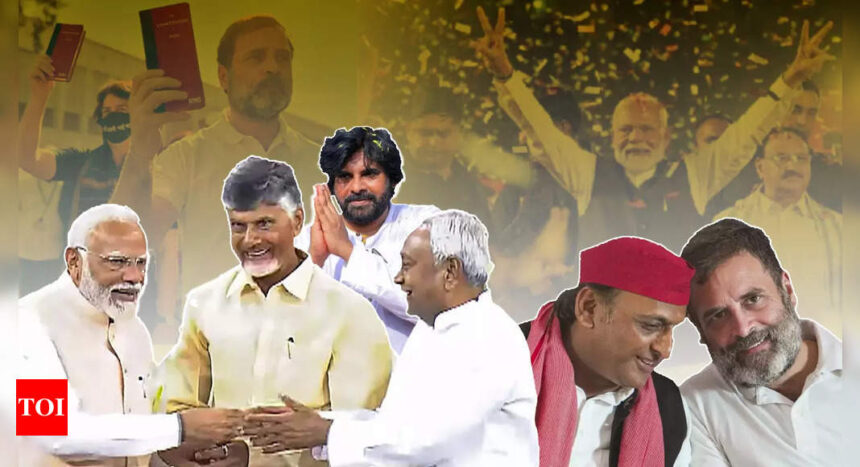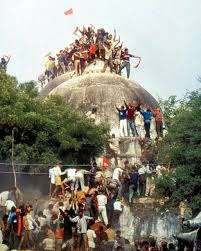In 2024, the electoral landscape has been a cautionary tale for pollsters who, in their quest for accuracy, largely misjudged the outcomes of various significant elections. Despite the complexity of analyzing electoral data and deriving insights from it, the reality was starkly different from what predictions suggested. Factors such as inadequate sample sizes, time constraints, increased competition, geographical difficulties, linguistic diversity, and financial pressures appear to be at the root of these miscalculations, leading to a significant disconnect between predicted and actual voter preferences.
In major contests like the Lok Sabha elections in India and the presidential race in the US, as well as smaller state elections in Haryana, Maharashtra, and Jharkhand, the actual results frequently contradicted exit polls, except, notably, in Jammu & Kashmir.
Pollsters in a Dilemma
The first major electoral challenge in India for 2024 was the extensive Lok Sabha elections, featuring over 8,000 candidates, 10 lakh polling booths, and a staggering 970 million registered voters across all states and Union territories. This massive scale makes precise outcome prediction daunting; however, pollsters aimed to paint a broad picture, which ultimately did not hold true this year.
After an intense campaign period and the completion of voting on June 1, expectations ran high. Polling data suggested an overwhelming victory for the Bharatiya Janata Party (BJP)-led National Democratic Alliance (NDA), forecasting 361 seats for the NDA and 145 for the opposition INDIA bloc in the 543-member Lok Sabha. This closely reflected the BJP’s ambitious target of “Abki Baar, 400 Paar.” However, reality quickly unraveled these predictions, revealing a shocking electoral verdict just days later.
The Election Day Shock
On June 4, the BJP faced a wake-up call as it not only fell short of its expected tally but also lost its majority for the first time since 2014, securing only 240 seats. The NDA, now requiring support from Bihar’s Nitish Kumar’s Janata Dal (United) and Chandrababu Naidu’s Telugu Desam Party (TDP), saw a resurgence of a previously muted opposition, prompting discussions about the reliability of pollsters.
Double Trouble for Pollsters
Alongside the Lok Sabha results, pollsters misjudged the mood in Odisha and Andhra Pradesh, where voters also cast ballots for new assemblies. In Andhra Pradesh, forecasts predicted a hung assembly, estimating seats for the TDP and Jagan Mohan Reddy’s YSRCP in a neck-and-neck race. Contrary to these estimates, the TDP emerged victorious by a significant margin, winning 135 out of 175 seats. Pawan Kalyan’s Janasena Party also made headlines, achieving a 100% success rate by winning in all contests it entered.
In Odisha, the anticipated rivalry between the BJP and Naveen Patnaik’s BJD proved misleading, with the BJP winning 78 seats and significantly disrupting Patnaik’s long-standing 24-year rule.
Repeated Mistakes?
Following the upheaval from the Lok Sabha elections, the Haryana elections became another testing ground. Riding high after a strong performance in the Lok Sabha elections, the Congress party expected a shift in power based on predicted anti-incumbency sentiments. Polls indicated a solid showing for the Congress. However, when the votes were counted on October 8, the BJP claimed an unexpected victory with 48 seats, while Congress fell short with 37 seats, illustrating that pollsters had again missed vital electoral dynamics.
The stark contrast between the closely aligned vote percentages for both parties and a significant seat gap underscored a collective failure to account for critical factors that played into voter behavior.
Continued Miscalculations
Subsequent elections in Maharashtra and Jharkhand posed further opportunities for pollsters to recalibrate. Initial estimates for Maharashtra anticipated 155 seats for the BJP-led Mahayuti and 122 for the opposition MVA—yet the Mahayuti instead triumphed with 230 seats. Meanwhile, in Jharkhand, it seemed promising for the INDIA bloc, but ultimately, they secured a decisive victory, garnering 50 seats against the NDA.
A Shared Fate: U.S. Pollsters
The year was equally disheartening for U.S. pollsters, who also faced criticism following the elections. Despite indicating a close contest between Donald Trump and Kamala Harris, the results showed Trump winning decisively across swing states, accumulating 312 electoral votes to Harris’s 226—a stark contrast to predictions that suggested a tight race.
In summary, 2024 emerged not only as a suspenseful election year but also as a significant moment of reckoning for pollsters, highlighting the challenges of accurately gauging public sentiment in an increasingly complex political landscape.










